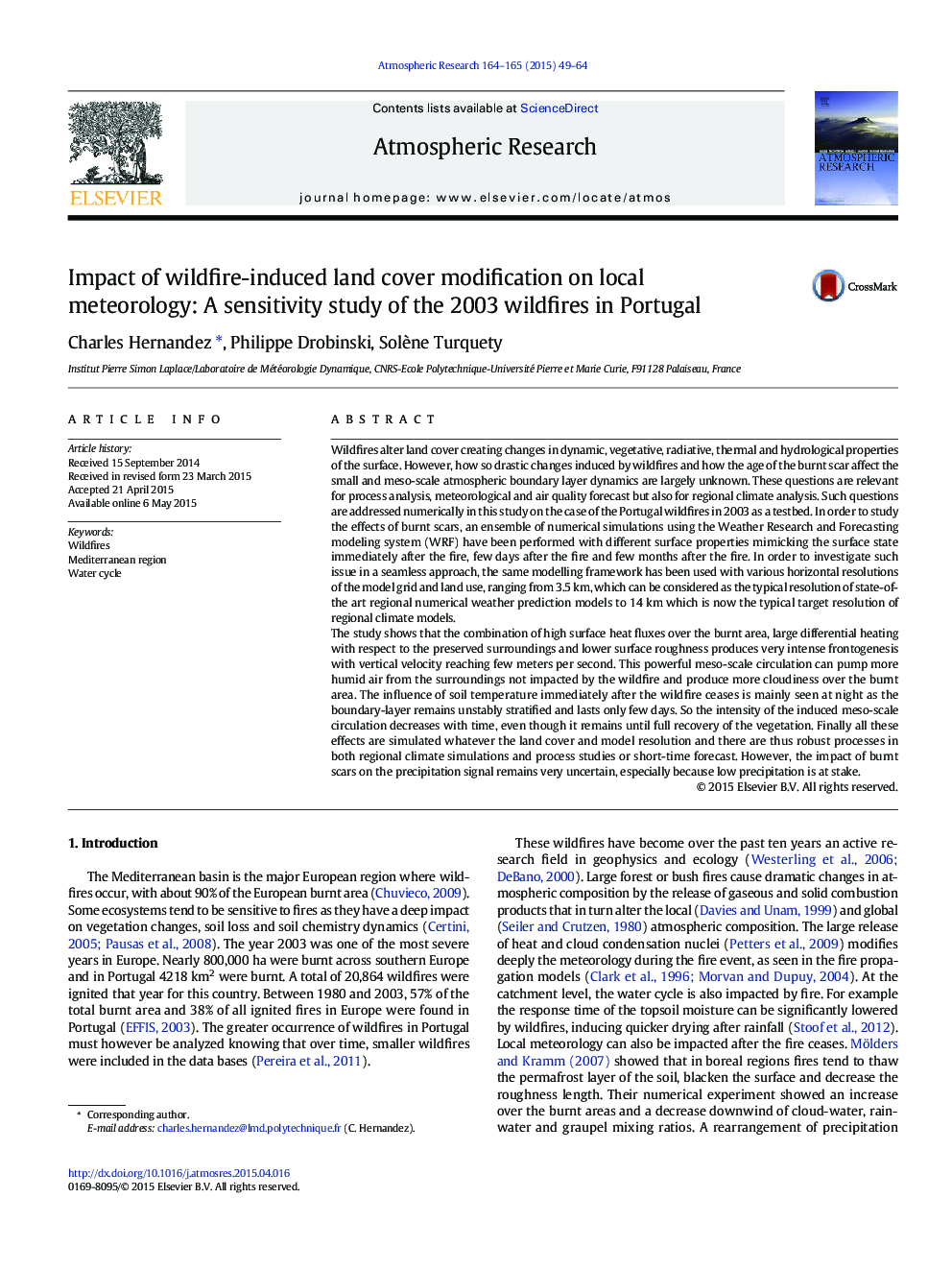| Article ID | Journal | Published Year | Pages | File Type |
|---|---|---|---|---|
| 6343188 | Atmospheric Research | 2015 | 16 Pages |
Abstract
The study shows that the combination of high surface heat fluxes over the burnt area, large differential heating with respect to the preserved surroundings and lower surface roughness produces very intense frontogenesis with vertical velocity reaching few meters per second. This powerful meso-scale circulation can pump more humid air from the surroundings not impacted by the wildfire and produce more cloudiness over the burnt area. The influence of soil temperature immediately after the wildfire ceases is mainly seen at night as the boundary-layer remains unstably stratified and lasts only few days. So the intensity of the induced meso-scale circulation decreases with time, even though it remains until full recovery of the vegetation. Finally all these effects are simulated whatever the land cover and model resolution and there are thus robust processes in both regional climate simulations and process studies or short-time forecast. However, the impact of burnt scars on the precipitation signal remains very uncertain, especially because low precipitation is at stake.
Related Topics
Physical Sciences and Engineering
Earth and Planetary Sciences
Atmospheric Science
Authors
Charles Hernandez, Philippe Drobinski, Solène Turquety,
